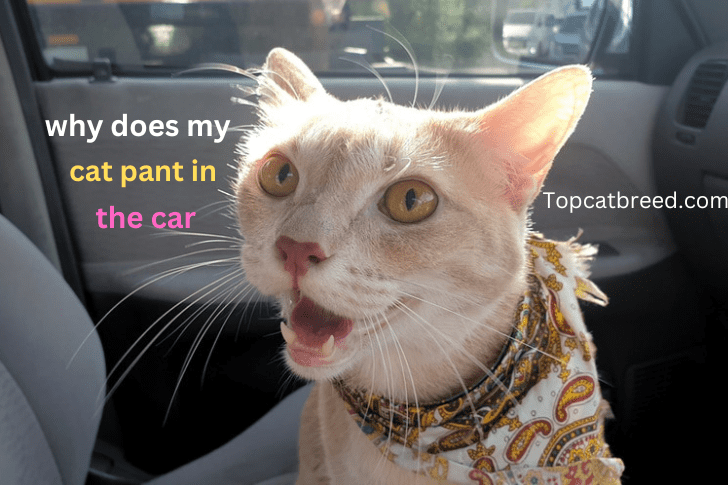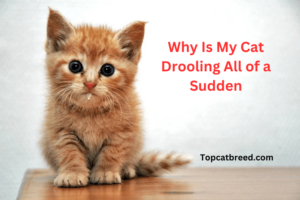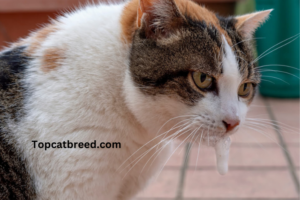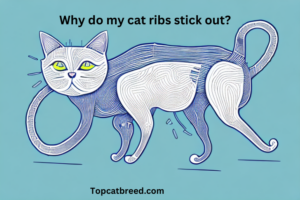Car rides can be a challenging experience for cats, often causing stress and anxiety. “Why does my cat pant in the car?” It’s not uncommon for cats to exhibit unusual behaviors during car trips, one of which is panting. But “why does my cat pant in the car?” and what can you do to help your feline friend stay calm during car rides? Firstly, it’s essential to understand that cats are creatures of habit, and they usually prefer their familiar environments. Cats experience stress from the sudden change in environment as well as the noise and movement of a car, which frequently results in panting as a physical symptom of their nervousness.
In addition, cats’ highly developed sense of smell is overwhelmed by strong car aromas, such as those from the engine, upholstery, or air conditioning, which adds to their sensory overload and agitated mood. Use a pet seat belt or cat carrier for safety to reduce your cat’s nervousness when traveling by car. Add your favorite blankets or toys to make the car seem like home. Introduce your cat to brief rides gradually, rewarding them with goodies or affectionate pats. To assist your cat get used to traveling in a car, be sympathetic and patient with them.
Why does my cat pant in the car?
Understanding Why does my cat pant in the car during car rides is crucial for addressing the issue effectively. Cats have various reasons for displaying this behavior while traveling, and it’s essential to consider these factors to ensure their well-being.
Fear and Anxiety
Cats may pant in the car due to fear and anxiety. The unfamiliar environment, the vibrations and sounds of the moving vehicle, and confinement within a carrier can trigger stress in cats. This can lead to panting as a response to their heightened emotional state. Cats who haven’t been exposed to car rides from a young age may find them particularly distressing.
Motion Sickness
Cats, like people, can suffer from motion sickness. The movements of the car can lead to nausea and discomfort, causing them to pant. They might also drool excessively or vomit during car rides. Identifying motion sickness as the cause of panting is crucial for addressing the issue properly.
Heat and Poor Ventilation
Overheating can lead to panting in cats. If the car’s interior is too warm and poorly ventilated, your cat might struggle to regulate their body temperature. Cats are sensitive to temperature changes, and their fur coats can make them more susceptible to overheating. Ensuring a comfortable temperature and good airflow within the car and carrier is essential to prevent excessive panting.
How to Keep Your Cat Relaxed in the Car
Ensuring your cat is relaxed during car rides involves a combination of preparation, desensitization, and creating a secure and comforting environment. Here are some strategies to help your feline companion stay calm while traveling:
Secure Carrier
The foundation for a successful car trip is a well-ventilated and secure carrier. Your cat’s carrier should be a familiar and comfortable space for them. Familiarize your cat with the carrier at home, providing them with treats and positive experiences inside.
Desensitization
Gradual exposure to the car environment is essential. Start with short, stationary trips to help your cat get used to the car’s surroundings without the added stress of movement. Increase the duration of these trips progressively, all while providing treats and engaging in playtime to create positive associations with the car.
Calming Strategies
Consider using various calming strategies, such as playing soft, soothing music during the car ride. Familiar scents, like your cat’s blanket or favorite toy, can provide comfort and familiarity. Pheromone sprays designed to reduce stress, such as Flyway , can also be beneficial.
Understanding Medical Problems
While stress and anxiety are common causes of panting in the car, it’s essential to consider potential medical issues that might be contributing to your cat’s discomfort.
Motion Sickness
Cats suffering from motion sickness may experience drooling, nausea, and vomiting during car rides. Consult your veterinarian if your cat exhibits these symptoms. They can provide anti-nausea medications, such as Cerenia, to alleviate motion sickness and make travel more comfortable for your cat.
Anxiety and Stress
Excessive panting due to anxiety and stress may necessitate behavior modification techniques or anti-anxiety medications prescribed by a veterinarian. Consulting with a professional will help determine the most suitable approach to address these concerns effectively.
Heat and Poor Ventilation
Maintaining a comfortable and well-ventilated environment in the car is vital to prevent heat-related issues. Cats should never be left unattended in a hot car, as they are prone to overheating. Adequate airflow and a suitable temperature are essential for their well-being during travel.
By understanding the causes of panting in the car and taking appropriate steps to address these concerns, you can ensure that your cat’s travel experiences are more enjoyable and stress-free. Your feline friend will appreciate your efforts to provide a comfortable and secure environment during car rides, leading to a happier and healthier travel companion.
ALSO READ. Do cats die instantly when hit by a car? Facts
What to Look For If Your Cat Is Panting
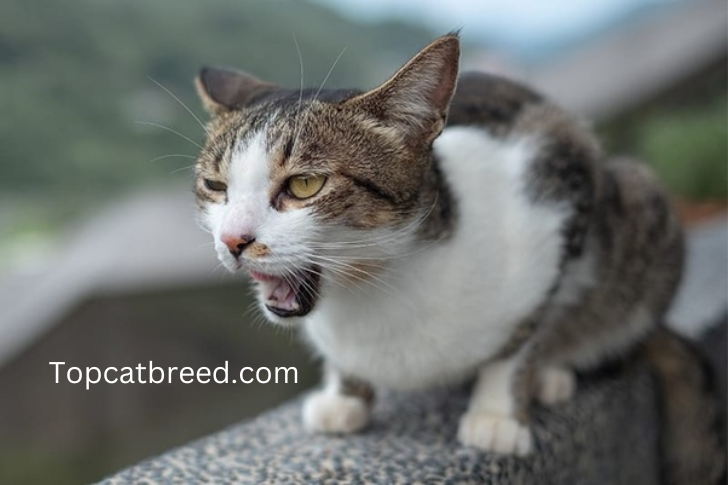
Cats, unlike dogs, don’t typically pant as a part of their normal behavior. Thus, if your cat is panting, it’s crucial to examine the situation closely and consider potential underlying issues. Here’s what to look for if your cat is panting Cats are known for their grooming habits, agility, and grace. Panting, however, is not a typical feline behavior. When you notice your cat panting, it’s essential to consider several factors to determine whether it’s a normal response or if there’s a more serious issue at hand.
Unusual Circumstances
Consider the context. If your cat has just engaged in strenuous physical activity, been exposed to excessive heat, or experienced extreme stress, panting might be a temporary and expected reaction. However, if there’s no apparent cause for these situations, it could be a sign of an issue.
Check the Environment
Ensure that your cat is in a well-ventilated and cool environment. Overheating, especially in a warm room, can lead to panting. Cats are sensitive to temperature changes, so maintaining a comfortable environment is essential.
Observing Behavior
Pay attention to other signs and symptoms that might accompany panting. These can include restlessness, drooling, hiding, and a change in your cat’s overall demeanor. Any of these signs could indicate an underlying issue.
Heart and Breathing Rate
Measure your cat’s heart and breathing rate. A normal cat’s heart rate is typically between 140 and 220 beats per minute. The respiratory rate should be between 16 and 40 breaths per minute. If your cat’s vital signs deviate significantly from these ranges, seek immediate veterinary attention.
Context Matters
First and foremost, consider the circumstances surrounding your cat’s panting. Did your cat just engage in strenuous play, vigorous exercise, or a particularly stressful event? Cats might pant briefly after intense physical activity, but this should be short-lived and should subside once they’ve had a chance to rest.
Difference between Cat and Dog Panting
While dogs commonly pant to cool themselves down and regulate body temperature, cats have a different method of achieving the same goal. Understanding the differences between cat and dog panting is crucial for identifying abnormal behavior in your feline friend:
Panting Rate
Cats have a higher resting respiratory rate compared to dogs, with an average of 16 to 40 breaths per minute. In contrast, dogs typically have a resting respiratory rate of 10 to 30 breaths per minute.
Panting Mechanism
Dogs pant by rapidly breathing with their mouths open, allowing them to release heat by evaporating moisture from their tongue and the lining of their mouth. Cats, on the other hand, release heat primarily through the glands on their paws and by grooming.
Situational Panting
While dogs may pant after exercise, during hot weather, or when stressed, it’s unusual for cats to exhibit panting in these situations. If a cat does pant in such circumstances, it could indicate a problem, such as heatstroke, exercise-induced collapse, or extreme stress.
Understanding these differences in panting behavior between cats and dogs helps cat owners identify and respond to potential health issues promptly. If your cat starts panting excessively, consult your veterinarian to determine the underlying cause and provide appropriate care.
Respiratory Rates: Cats vs. Dogs
One noticeable difference is the panting rate. Cats tend to have a higher resting respiratory rate compared to dogs. A typical cat has a resting respiratory rate of 16 to 40 breaths per minute, while dogs generally fall within a range of 10 to 30 breaths per minute at rest. This variance stems from the unique biology of each species.
Situational Panting: Dogs vs. Cats
In terms of situational panting, it’s not common for cats to exhibit panting as a response to heat, exercise, or stress, unlike dogs. Dogs will pant in hot weather, after intense physical activity, or when they’re anxious. For cats, such behaviors are more likely to be considered atypical and might indicate an underlying issue. If a cat does pant in such situations, it could suggest conditions like heatstroke, exercise-induced collapse, or severe stress, which require immediate attention.
What Your Cat Wants to Indicate by This Behavior
When your cat pants, it’s crucial to decode the underlying messages and understand what they are trying to communicate. While panting is unusual behavior for cats, it can signify various things, including .here have all information about Why does my cat pant in the car.
1-Discomfort or Stress
Cats may pant when they are uncomfortable or stressed. Perhaps they’re in an unfamiliar environment, feeling anxious, or experiencing motion sickness during a car ride. Recognizing their distress and addressing it is crucial for their well-being.
2- Overheating
Panting can be your cat’s way of saying they are too hot. This is especially common in hot weather or if your cat has been engaging in vigorous play. Ensuring they have access to a cool, well-ventilated space is essential.
3- Health Concerns
In some cases, panting can be a sign of an underlying health issue, such as respiratory problems, heart disease, or obesity. If your cat’s panting is persistent and unexplained, consulting your veterinarian is essential.
4-Heat Regulation
One of the primary reasons your cat may pant is to regulate body temperature. Cats lack sweat glands like humans, making it challenging to cool down. By panting, they can release heat and regulate their temperature. It is normal for your cat to pant if you notice it.
5_Fear or Anxiety
Cats may pant when they are scared or anxious. This could be due to a new environment, loud noises, or unfamiliar people or animals. Recognizing the source of their fear and providing a safe, calm space can help alleviate their anxiety.
Understanding your cat’s unique behavior is crucial for their well-being. If your cat pants regularly or exhibits other concerning symptoms, consult your veterinarian to rule out any underlying health issues and ensure your feline companion is happy and healthy.
FAQS
1-Why is my cat panting in the car?
Cats may pant in the car due to stress, motion sickness, or overheating. It’s essential to create a comfortable and secure travel environment to reduce panting during car rides.
2. Is it usual for cats to pant after they have played?
Occasional panting after vigorous play is normal for cats. It helps them cool down. However, excessive or prolonged panting could indicate overheating or underlying health issues.
3. Should I be concerned if my cat pants indoors?
Yes, if your cat pants indoors without apparent reasons like heat or play, it can be a sign of underlying health problems. Consult your veterinarian to rule out any medical issues and ensure your cat’s well-being.
4-How do I calm my cat down in the car?
To calm your cat in the car, create a comfortable and secure space with their favorite blanket or toy. Gradually introduce them to car rides through short, positive experiences. Consult with your veterinarian about anti-anxiety solutions if necessary.
5. Why is my cat’s mouth open during a car ride?
If your cat’s mouth is open during a car ride, it could be due to stress, motion sickness, or overheating. Ensure a well-ventilated, comfortable travel environment to address this issue.
Conclusion
Understanding Why does my cat pant in the car and how to manage it during car rides is essential for the well-being of your feline friend. While occasional panting can be normal, especially in stressful or hot situations, consistent or excessive panting might indicate underlying issues. To ensure a safe and comfortable car journey for your cat, focus on creating a secure and comfortable space and consult with your veterinarian for professional guidance. With the right approach, you can help your cat feel more relaxed during car rides, making it a positive experience for both of you.Why does my cat pant in the car

